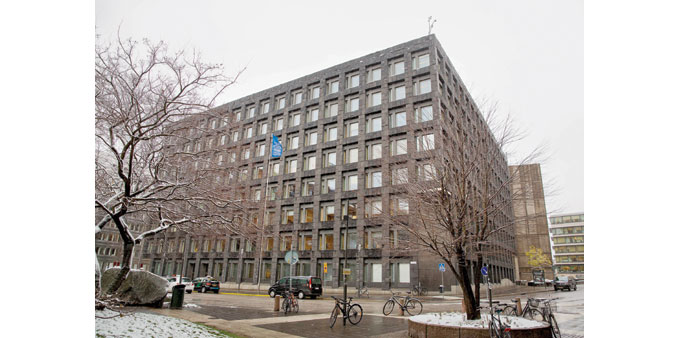Reuters
Stockholm
Sweden’s central bank chief abandoned his cautious approach in February when he unleashed negative rates and bond buys to fight falling prices, but there are already signs the bank might not have tools sharp enough to match that rhetoric.
As recently as July, Stefan Ingves became the first governor since the bank became independent to put himself on the losing side of a policy vote, saying a half percentage point rate cut was too much.
Seven months later, he pledged the Riksbank was “essentially prepared to do all we can to uphold the inflation target” and that the -0.10% repo rate could “go much lower if needed”.
The credibility behind that statement took a hit, though, when minutes showed his new deputy Henry Ohlsson believed the repo rate could not go “very much below that”.
Those doubts mixed with risks of meagre wage growth, the chance of a rising currency as well as a debt bubble which all have added to concerns the Riksbank’s about-turn may be too little to late.
Even if the Riksbank were to cut the rate further into negative territory like the Danish and Swiss central banks have, many argue the risks are greater than the possible benefits.
“Most of the central banks’ expansionary policies disappear into rising asset values, not into the traditional CPI inflation measure,” said Per Frennberg, head of investment management at occupational pension manager Alecta, overseeing 700bn crowns ($83bn) of pension money.
Frennberg mentioned bond prices, price tags on both listed and unlisted companies and real estate prices as examples.
With the economy expected to expand 2.7% this year, there are worries that the crown could become more of a safe haven as well as the build-up of credit bubbles.
Last years’ rate cuts have helped fuel household debt - a major reason for the Riksbank not to cut rates sooner and deeper. Debt levels are already among the highest in Europe.
With its latest steps the Riksbank fired another shot in what economists call a global currency war, but with the crown now 13% weaker since mid-2012 versus the euro, future imported inflation through the exchange rate could prove hard-earned.
The February 12 rate announcement helped weaken the crown to a high near 9.70 versus the euro. It has since then strengthened back to 9.35, clearly stronger than before the new measures were presented.
Fresh data showing the Swedish economy grew by 2.7% from a year earlier in the fourth quarter – stronger than market expectations – pushed buyers into the crown. Given the presence of a lower bound for interest rates and the small size of the government bond market, the currency could well be one of very few ways the central bank could actively lift inflation.
“If we get a steep strengthening of the crown, it is game over, basically,” Riksbank Deputy Governor Per Jansson said last week.
The Riksbank has said one of the tools at its disposal – but lowest on the priority list – was currency intervention. Anders Skoldberg, portfolio manager at the Second Swedish National Pension Fund, said he believed companies and markets will always overpower a central bank in the end.
“I think volatility can be dampened, but I do not think the Riksbank can win against Swedish or foreign companies and their interests in owning or not owning crowns,” Skoldberg said.
The bank’s credibility matters as wage negotiations affecting nearly 3mn workers expire next year. Employers have started to question the 2% inflation target as a starting point for talks.
A survey commissioned by the central bank showed money market players saw inflation in two years at 1.3% and at 1.7% in five years. Headline consumer prices fell by 0.2% in January from a year earlier.
“They need luck,” said Michael Bostrom, Danske Bank analyst.

The headquarters of Sweden’s central bank in Stockholm. The Riksbank has said one of the tools at its disposal u2013 but lowest on the priority list u2013 wa
